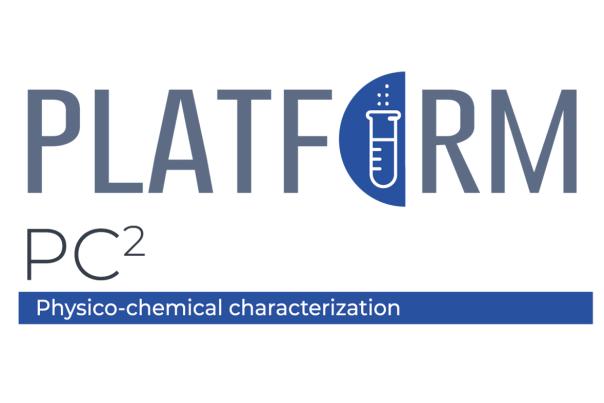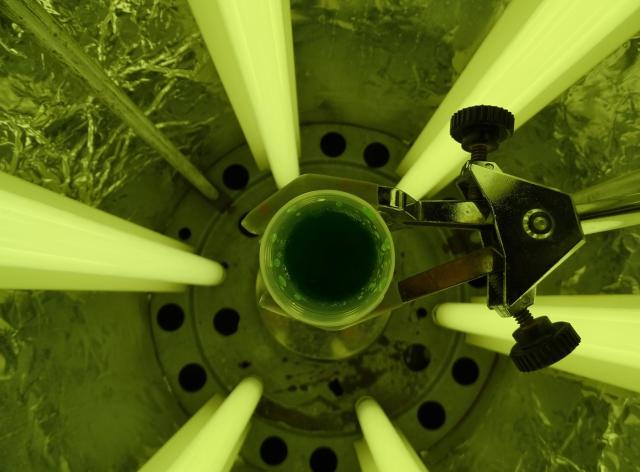The PC² platform has extensive expertise covering all equipment, as well as the technical and scientific expertise available on the platform (analysis and characterization, nuclear magnetic resonance, polymorphism and crystallography).
Description de la plateforme
La plateforme est équipée d'un large parc d'instruments parmi lesquels:
- des spectromètres à résonance magnétique nucléaire (RMN) liquide et solide ;
- des diffractomètres à rayons X monocristaux et à poudre ;
- des instruments pour l'analyse des propriétés texturales et de la composition chimique ;
- des chromatographes et centrifugeurs.

La combinaison de ces techniques, associée à la présence de deux logisticiens et d'un technicien dédiés à l'analyse des échantillons, ainsi que de chercheurs hautement qualifiés pour le développement d'applications avancées, constitue une caractéristique stratégique de cette plateforme. Parmi ces techniques de caractérisation, la RMN à l'état solide et la diffraction des rayons X apparaissent comme des outils avancés.
La plateforme collabore activement avec des équipes universitaires, tant au niveau national qu'international. Elle entretient également des collaborations fructueuses avec des partenaires industriels, notamment dans les domaines des sciences des matériaux et des industries alimentaire et pharmaceutique.
Equipement
Diffractomètres à rayons X monocristaux et poudres
Le Dr Nikolay Tumanov, logisticien de recherche, est responsable de la cristallographie. La plateforme PC² dispose de trois diffractomètres à rayons X dédiés à deux techniques différentes : la diffraction monocristalline et la diffraction des poudres.
Pour l'analyse par diffraction des rayons X sur monocristaux, seul un petit cristal de l'échantillon est nécessaire. L'analyse fournit la structure cristalline complète du composé étudié, c'est-à-dire les coordonnées de tous les atomes et la configuration absolue.
La diffraction des rayons X sur poudre nécessite des échantillons de poudre et est utilisée pour l'étude de différents types de matériaux solides et liquides : produits pharmaceutiques, polymères, nanomatériaux, verre. En règle générale, cette méthode permet d'identifier la phase cristalline connue dans le matériau étudié.
La combinaison de méthodes avancées de diffraction sur poudre avec la RMN à l'état solide et des calculs de chimie quantique permet de déterminer la structure cristalline directement à partir de l'échantillon de poudre.
Analyse élémentaire
Cet instrument permet de déterminer rapidement la teneur en carbone, hydrogène, azote, soufre ou oxygène dans les matières organiques et autres types de matériaux. Cette analyse repose sur la combustion totale du matériau à 950 °C (sous un flux d'oxygène et sous pression).
Le carbone, l'hydrogène, l'azote et le soufre présents dans les échantillons sont transformés respectivement en dioxyde de carbone, en eau, en dioxyde d'azote et en dioxyde de soufre. Une colonne chromatographique sépare ces produits, qui sont mesurés par un détecteur à conduction thermique.
ICP-OES
La spectrométrie d'émission optique couplée à un plasma à couplage inductif (ICP-OES) repose sur l'excitation thermique des ions dans le plasma et l'analyse de la lumière émise par ces ions. Chaque élément émet des longueurs d'onde caractéristiques. Les longueurs d'onde sont ensuite séparées, identifiées et leur intensité mesurée par un spectromètre. La concentration élémentaire est déterminée par comparaison avec un étalonnage externe.
Résonance magnétique nucléaire RMN (400, 500 et 600 MHz)
Le Dr Luca Fusaro, logisticien de recherche, est chargé du développement de l'utilisation de la résonance magnétique nucléaire (RMN) à l'Université de Namur. Il collabore avec d'autres chercheurs, les aidant à mieux comprendre divers systèmes.
L'un des domaines les plus actifs est notamment la RMN à l'état solide, qui est utilisée pour étudier un large éventail de matériaux organiques, inorganiques, de catalyseurs et de verres. Les noyaux standard sont le 13C, le 27Al et le 29Si, mais des applications plus avancées sont également utilisées pour étudier des espèces souvent diluées, telles que le 67Zn, le 71Ga, le 119Sn, etc.
Des mesures à des températures variables peuvent également être effectuées avec l'équipement RMN disponible.


